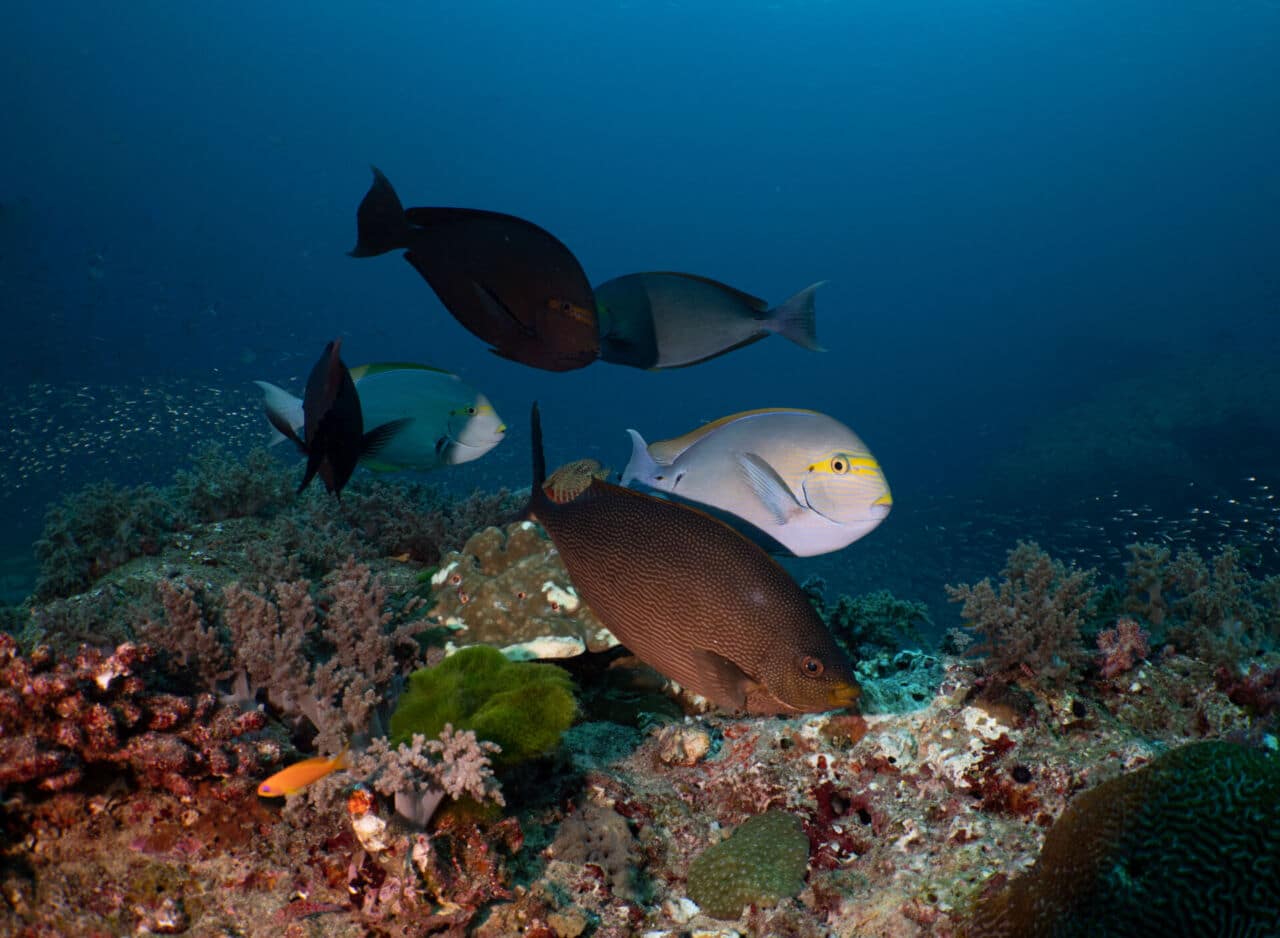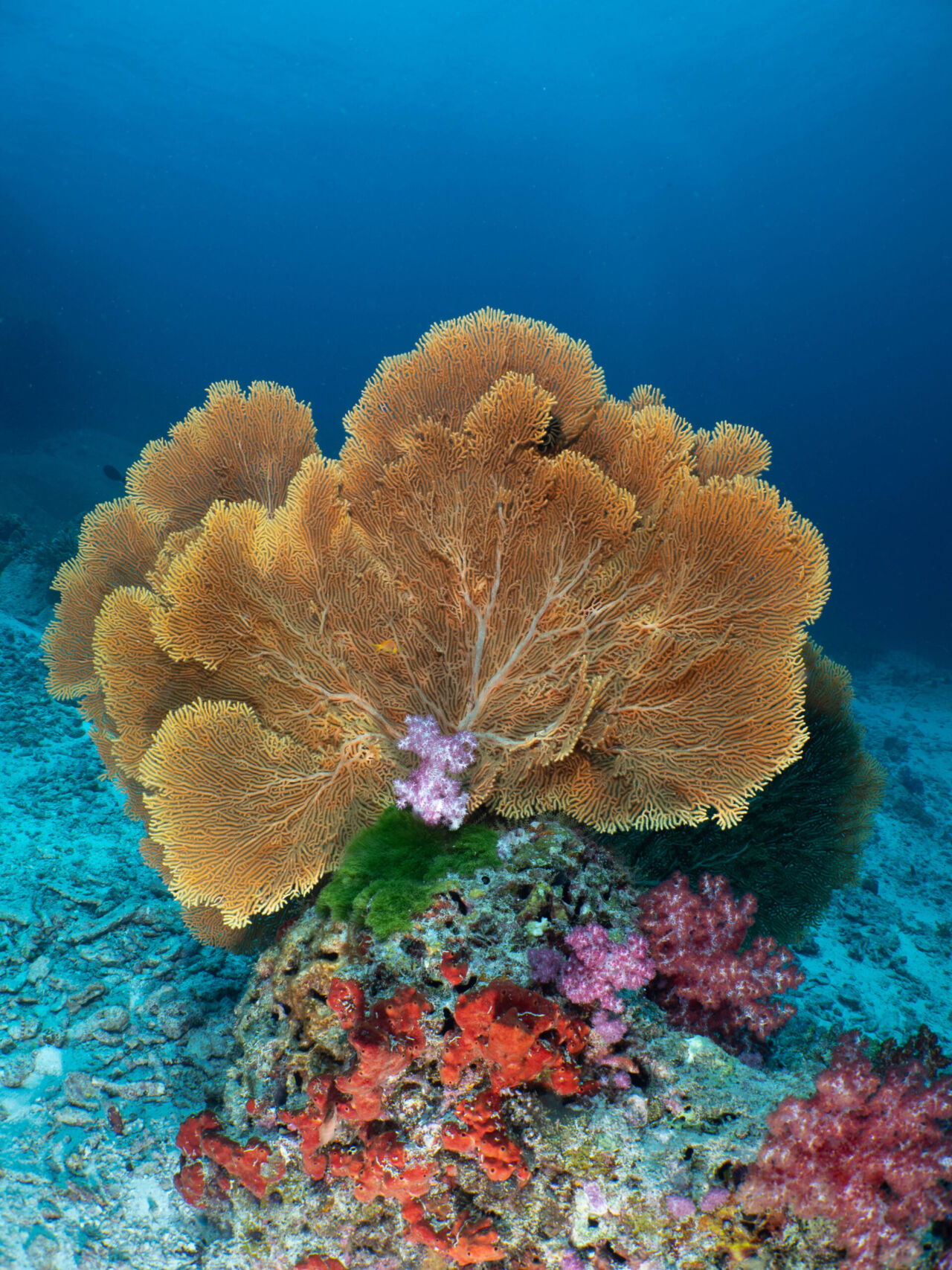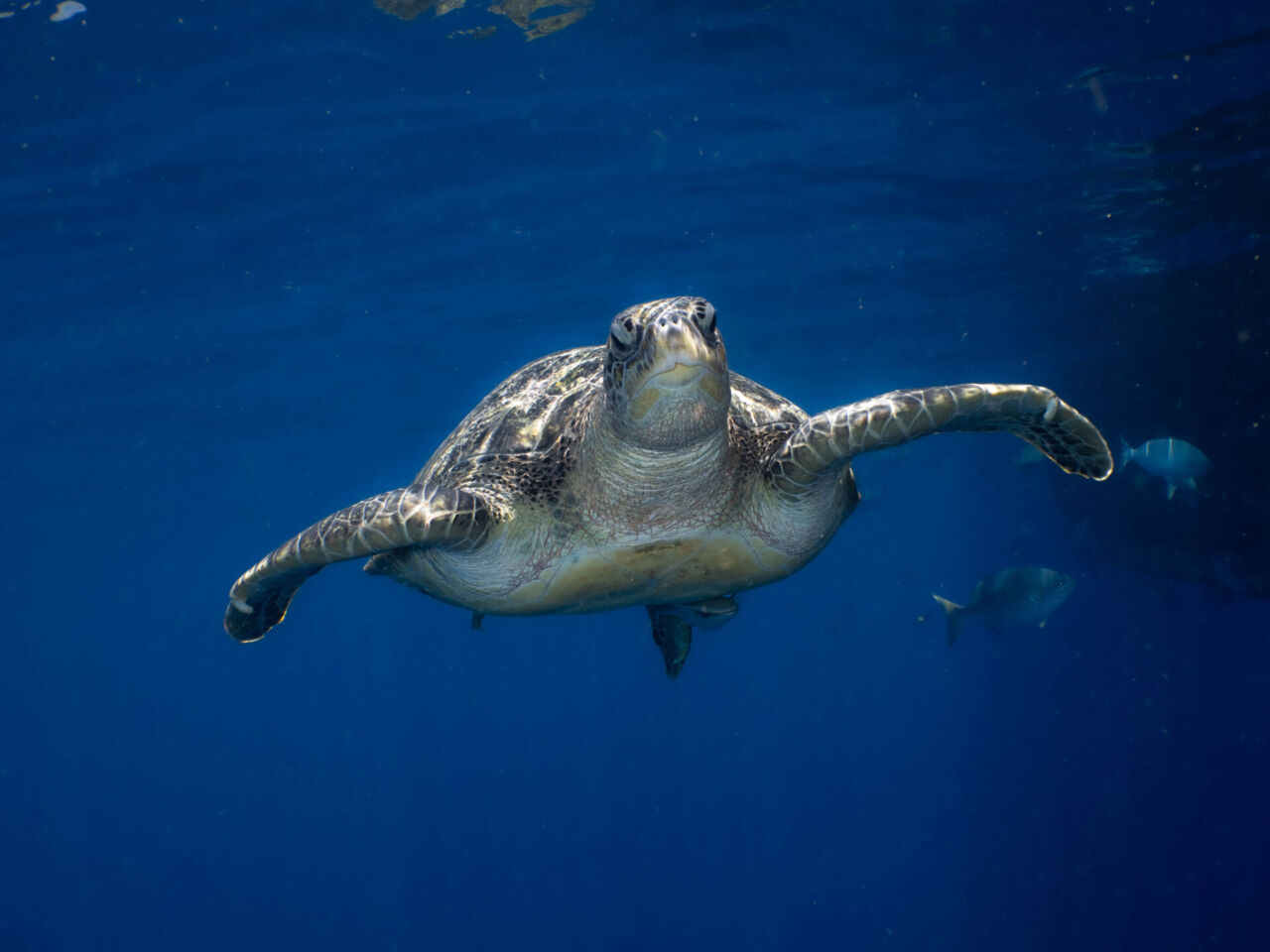Dive With Us in The Similan Islands: #2 West of Eden
The morning remains calm as I back roll into the water for the second dive of the day, entering the warm waters of West of Eden, Similan Islands #7. Located on the west side of the Island, this site blends a lush sloping reef with the dramatic granite boulders that the Similan Islands are known for.
Exploring the Shallow Reef

I descend slowly into the shallows, hovering for a moment over the expansive coral reef below as the sunlight filters through the surface. The reef here is alive with detail — dominated by massive coral heads and wide plates of lettuce coral. Their shapes create ledges, crevices, and overhangs that shelter countless reef creatures. I scan each one carefully, looking for the rounded outline of a frogfish perfectly blended into its surroundings, or a moray eel hiding deep within a crevice.
The visibility stretches far ahead as schools of fusiliers and snappers weave between us and the reef. I keep an eye out towards the blue for anything larger… This is the very place where I once saw a juvenile whale shark pass by!
The Aftermath of Coral Bleaching
We continue north, and pass over a large stretch of coral rubble. Broken fragments are scattered across the sand; it’s a stark contrast to the healthy reef we’ve just come from. This patch may be the result of past coral bleaching events that effected West of Eden and other areas in the Similan Islands — the most significant in 2010, and most recent one in 2024 — and it hasn’t recovered as quickly as other parts of this dive site. Perhaps sediment movement, reduced nutrients, anchor damage, or other human impacts have played a role. Whatever the cause, seeing it reinforces how important it is to protect and care for the marine environment so these damaged areas have the best chance of returning to life. Considering the health of the rest of this reef, it is likely that this area would benefit from ongoing coral restoration efforts.
Leaving the rubble behind, I allow the push of the current to take me deeper. Towering shadows form in the distance, and a different topography begins to unfold…
The Channel
The reef slopes downwards and we follow its edges north, the shadows becoming clearer as the boulders take shape in clear view. As we reach the boulders, a narrow channel appears, formed by two huge granite rock structures rising from the seabed. Their walls are fringed with delicate sea fans and patches of colourful soft coral, swaying gently in the current.

Right at the entrance, our guide signals and points to the sand. A spearing mantis shrimp sits at the mouth of its burrow. Its large eyes track our movements with claws poised in quiet defence. As we move slowly through the channel, we scan the bases of the sea fans and the swaying sea whips on the sand. This is prime ghost pipefish territory, and I take my time, looking closely for their well-camouflaged shapes hidden among the coral.
After exploring the channel, the end of the boulders open up to the sloping sand at 25 metres. It’s dotted with even more sea fans and sea whips. I take a look around for the elusive ribbon eel that often hides in this area. These eels mostly stay around the same patch of reef or sand, changing colour as they mature: juveniles are usually black with a yellow dorsal fin; males turn bright blue with yellow highlights; females become a vivid yellow as they reach their final stage. Spotting one here is always a highlight, and if you dive here often, it’s even possible to notice the colour changes of individuals as they age. Although, they can live to 20 years old!
Thermoclines

The gorgonian sea fans at West of Eden are some of the largest you’ll see anywhere in the Similan Islands. Their impressive size could be linked to the nutrient-rich water that the thermoclines push upwards from the deeper ocean. A thermocline is a distinct layer in the water column where the temperature drops noticeably, often by several degrees. When these cooler, deeper waters rise, they carry nutrients that help filter-feeders like sea fans thrive. On most dive sites here in the Andaman Sea, you can feel the cool shift as you swim through, knowing that the this change is delivering a vital boost to life on the reef.
Following the Boulders
We exit the channel and continue with our right shoulder to the reef, following the formation of boulders that stretch deeper into the blue. A huge school of trevally moves in tight formation, circling in flashes of silver. I watch the deeper water beyond them, hoping to spot a reef shark cruising by.
I begin to look within the overhangs and ledges created by the granite rock and use my torch to look for lobsters and other marine life hiding in the shadows. Once we’ve explored the base of the boulders, we gradually begin to shallow up to the top. Here, the granite rock is covered with patches of coral and sponges, attracting plenty of reef fish. Pairs of butterflyfish swim closely together, while moorish idols glide over the rock, feeding as they go.
Back to the Reef
We turn back towards the shallows, now keeping the reef on our left shoulder. This part of West of Eden is well known for green turtle sightings, so we slow our pace and scan the coral heads and sandy patches carefully as we wait. Sunlight pours through the surface as parrotfish graze noisily on the coral, their beaks scraping as they feed.

In the patches of rubble nearby, there’s also a good chance of finding a reef octopus. Experts at camouflage, they can change both their skin colour and texture in an instant to match their surroundings. Often the only clue is the movement of an eye or a slight shift in shape as they watch from their hiding place. They’re always ready to disappear into the rocks if approached too closely!
Our guide signals for the safety stop, and we rise slowly to five metres. The combination of bright coral, crystal-clear visibility, and the gentle movement of the fish makes for a beautiful and relaxing end to the dive. I hang motionless, just watching, but now it’s time to surface. As the reef begins to fade below me, the anticipation builds for the exploration that awaits…
Like what you read? share it with your friends!
Next en route on board MV DiveRACE Class X:
Next, our journey will take us further north to explore another stunning Similan site. One with its own unique blend of reef and boulder terrain, and new chances for exciting encounters!
Want to read more? Take a look at our latest posts!
